
How to Use DC-DC 12V-5V: Examples, Pinouts, and Specs
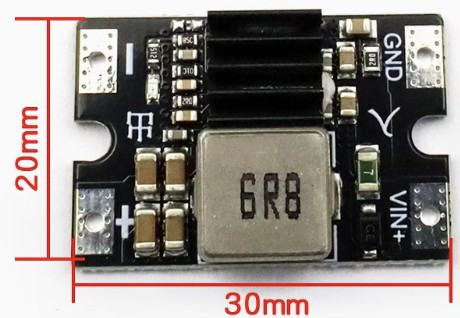
 Design with DC-DC 12V-5V in Cirkit Designer
Design with DC-DC 12V-5V in Cirkit DesignerIntroduction
The DC-DC 12V-5V converter is a step-down voltage regulator designed to convert a 12V input voltage to a stable 5V output. This component is widely used in electronic circuits to power devices that require a lower voltage, such as microcontrollers, sensors, and USB-powered devices. Its compact size and high efficiency make it an essential component in automotive, industrial, and DIY electronics projects.
Explore Projects Built with DC-DC 12V-5V
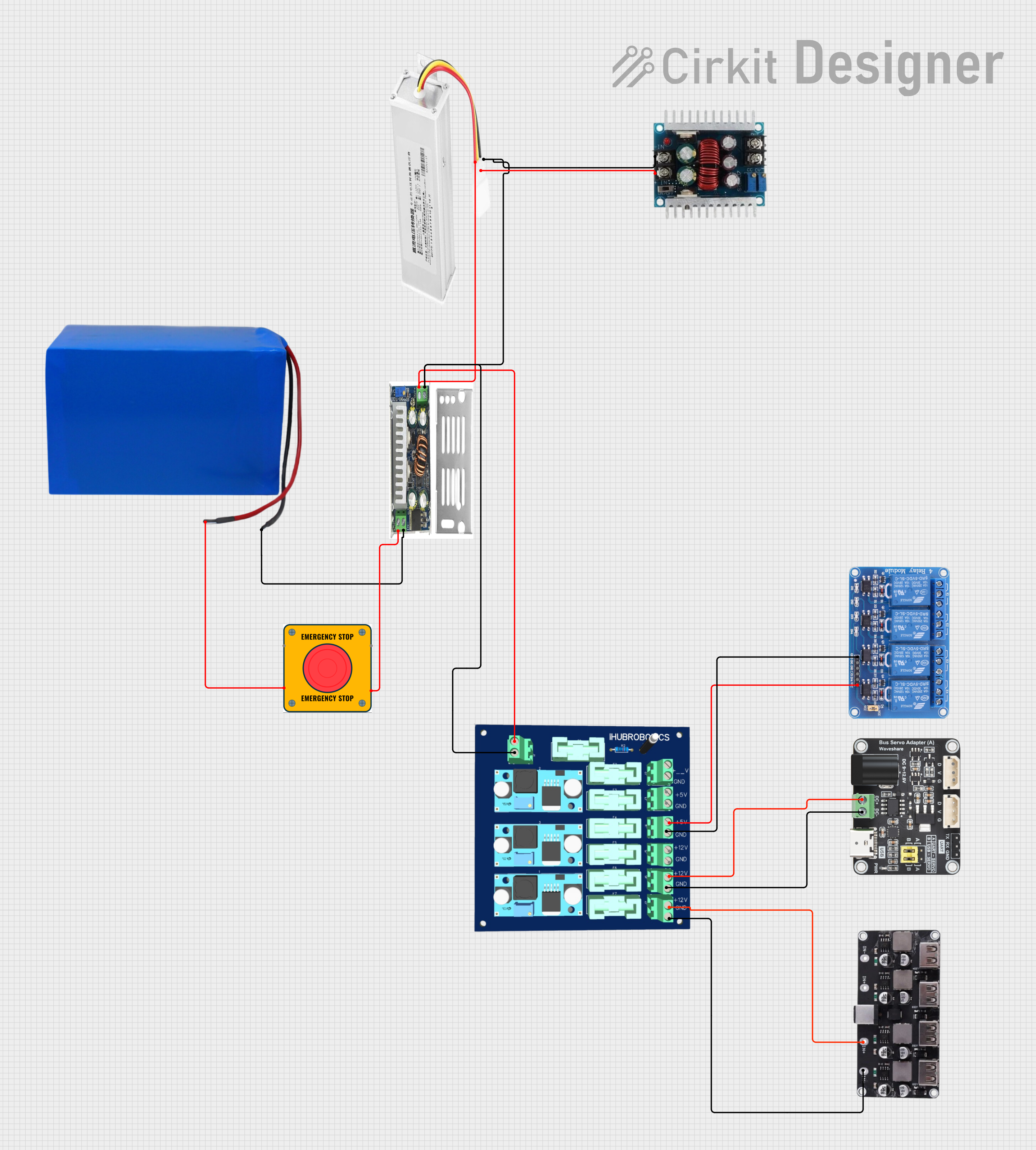
 Open Project in Cirkit Designer
Open Project in Cirkit Designer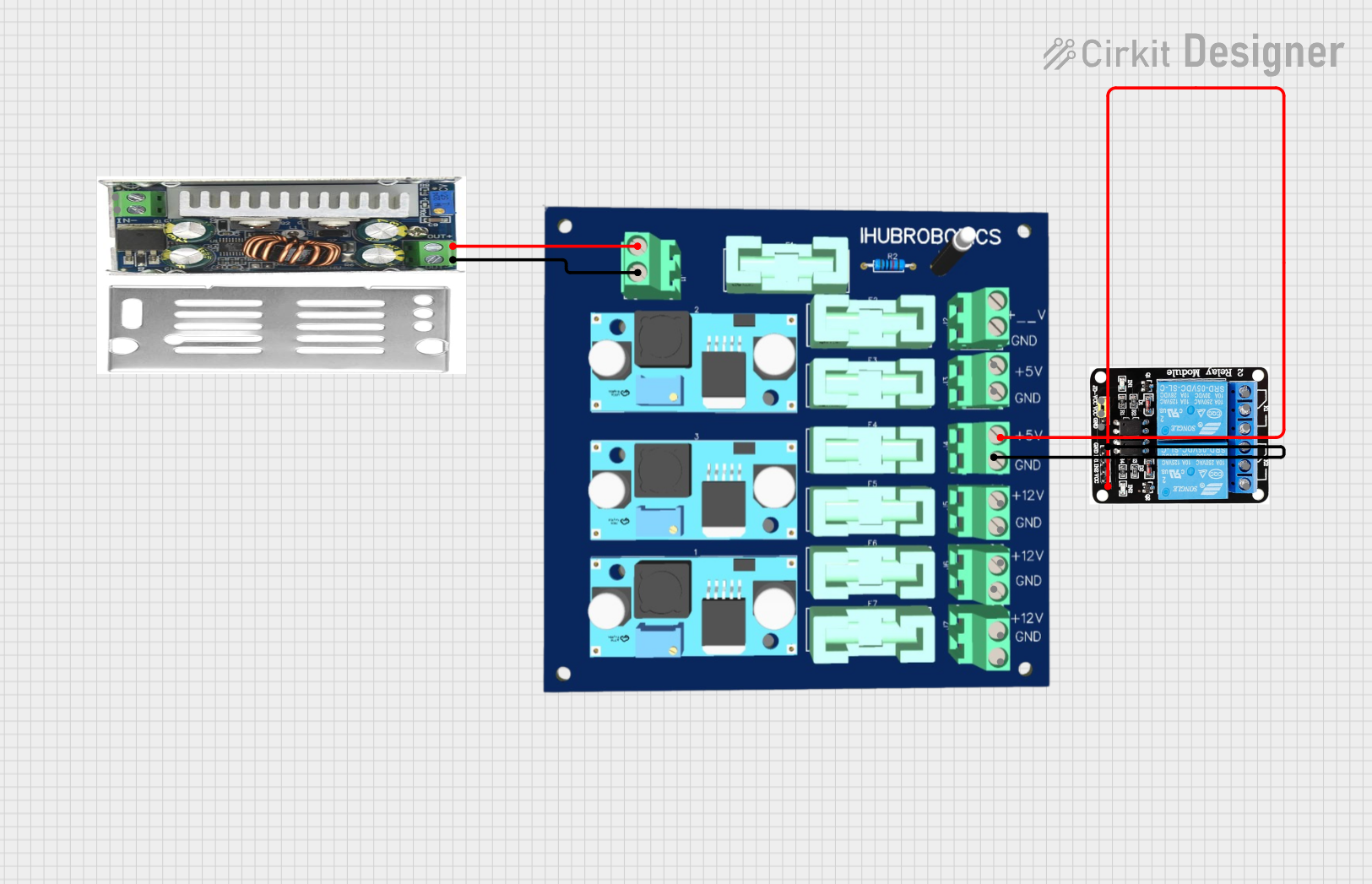
 Open Project in Cirkit Designer
Open Project in Cirkit Designer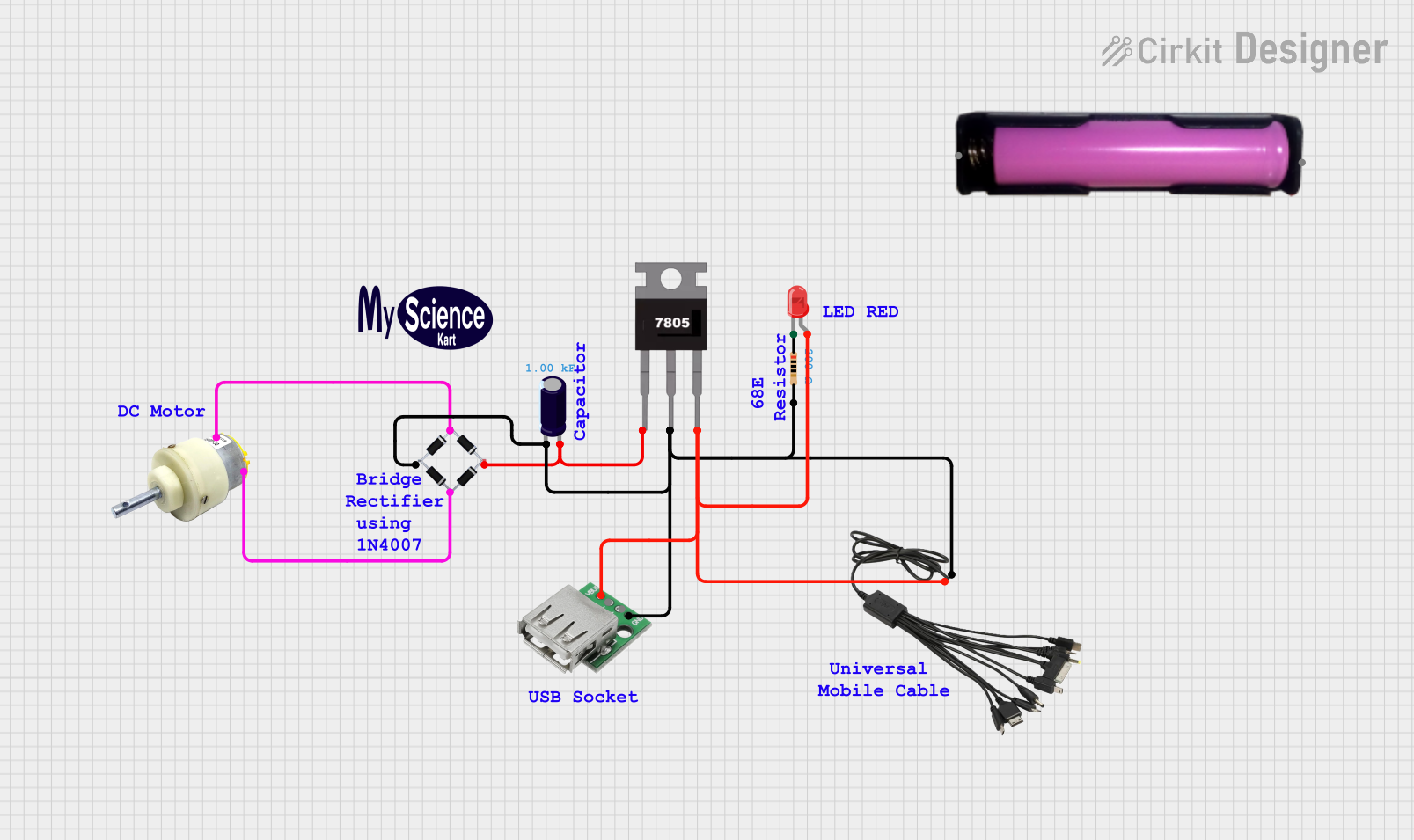
 Open Project in Cirkit Designer
Open Project in Cirkit Designer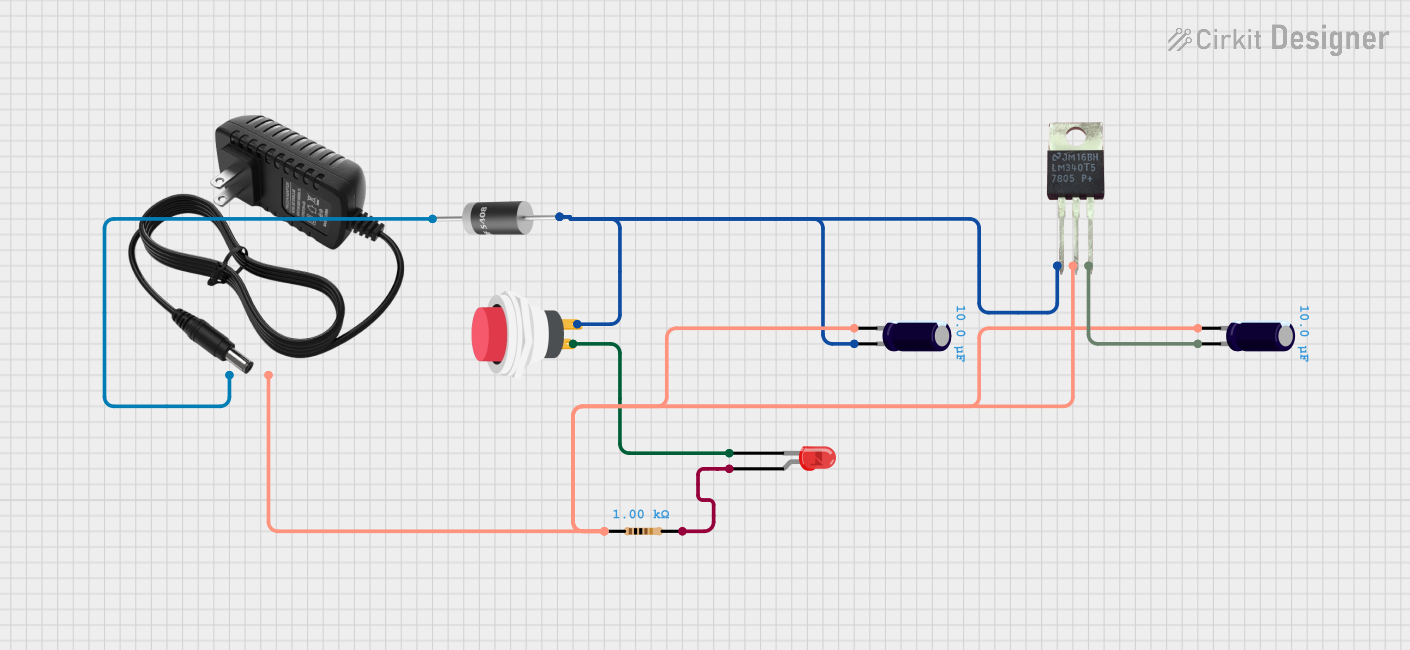
 Open Project in Cirkit Designer
Open Project in Cirkit DesignerExplore Projects Built with DC-DC 12V-5V

 Open Project in Cirkit Designer
Open Project in Cirkit Designer
 Open Project in Cirkit Designer
Open Project in Cirkit Designer
 Open Project in Cirkit Designer
Open Project in Cirkit Designer
 Open Project in Cirkit Designer
Open Project in Cirkit DesignerCommon Applications and Use Cases
- Powering 5V microcontrollers (e.g., Arduino, Raspberry Pi)
- USB device charging (e.g., smartphones, tablets)
- Automotive electronics (e.g., powering GPS modules, dash cams)
- Battery-powered systems requiring voltage regulation
- DIY projects and prototyping
Technical Specifications
The following table outlines the key technical details of the DC-DC 12V-5V converter:
| Parameter | Value |
|---|---|
| Input Voltage Range | 8V to 24V |
| Output Voltage | 5V ± 0.1V |
| Maximum Output Current | 3A (typical), 5A (peak) |
| Efficiency | Up to 95% |
| Ripple Voltage | < 50mV |
| Operating Temperature | -40°C to +85°C |
| Dimensions | 25mm x 15mm x 10mm (approximate) |
Pin Configuration and Descriptions
The DC-DC 12V-5V converter typically has four pins or terminals. The table below describes each pin:
| Pin Name | Description |
|---|---|
| VIN | Input voltage pin (connect to 12V power source) |
| GND | Ground pin (common ground for input and output) |
| VOUT | Output voltage pin (provides regulated 5V output) |
| EN (optional) | Enable pin (used to turn the converter on/off) |
Note: Some models may not include an enable pin. Always refer to the specific datasheet for your module.
Usage Instructions
How to Use the Component in a Circuit
Connect the Input Voltage (VIN):
Attach the VIN pin to a 12V power source. Ensure the input voltage is within the specified range (8V to 24V) to avoid damaging the converter.Connect the Ground (GND):
Connect the GND pin to the ground of your circuit. This serves as the common reference point for both input and output.Connect the Output Voltage (VOUT):
Attach the VOUT pin to the device or circuit requiring a 5V power supply. Ensure the connected load does not exceed the maximum output current rating.Optional Enable Pin (EN):
If the module includes an enable pin, connect it to a logic HIGH (e.g., 3.3V or 5V) to activate the converter. Pulling it LOW or leaving it unconnected may disable the output.
Important Considerations and Best Practices
- Heat Dissipation: For high-current applications, ensure proper heat dissipation by using a heatsink or providing adequate ventilation.
- Input Voltage Filtering: Use a capacitor (e.g., 100µF) across the input terminals to reduce noise and improve stability.
- Output Voltage Filtering: Add a capacitor (e.g., 10µF) across the output terminals to minimize ripple voltage.
- Polarity Protection: Double-check the polarity of the input and output connections to prevent damage to the module.
- Load Testing: Before connecting sensitive devices, test the output voltage and current with a dummy load to ensure proper operation.
Example: Using with an Arduino UNO
The DC-DC 12V-5V converter can be used to power an Arduino UNO from a 12V source. Below is an example circuit and code:
Circuit Connections
- Connect the VIN pin of the converter to a 12V power source.
- Connect the GND pin of the converter to the ground of the power source and the Arduino.
- Connect the VOUT pin of the converter to the 5V pin of the Arduino UNO.
Example Code
// Example code to blink an LED using Arduino UNO powered by DC-DC 12V-5V converter
// Ensure the DC-DC converter is providing a stable 5V to the Arduino's 5V pin.
const int ledPin = 13; // Built-in LED pin on Arduino UNO
void setup() {
pinMode(ledPin, OUTPUT); // Set LED pin as output
}
void loop() {
digitalWrite(ledPin, HIGH); // Turn the LED on
delay(1000); // Wait for 1 second
digitalWrite(ledPin, LOW); // Turn the LED off
delay(1000); // Wait for 1 second
}
Warning: Do not connect the Arduino's VIN pin when using the 5V pin for power input.
Troubleshooting and FAQs
Common Issues and Solutions
No Output Voltage:
- Cause: Incorrect input voltage or loose connections.
- Solution: Verify the input voltage is within the specified range and check all connections.
Overheating:
- Cause: Excessive load current or poor ventilation.
- Solution: Reduce the load current or improve heat dissipation with a heatsink.
High Ripple Voltage:
- Cause: Insufficient filtering capacitors.
- Solution: Add capacitors across the input and output terminals as recommended.
Device Not Powering On:
- Cause: Enable pin not connected or set to LOW.
- Solution: Connect the enable pin to a logic HIGH or check the module's datasheet for default behavior.
FAQs
Q: Can I use this converter with a 24V input?
A: Yes, as long as the input voltage does not exceed 24V and the load current is within the specified limits.
Q: Is the output voltage adjustable?
A: Most DC-DC 12V-5V converters provide a fixed 5V output. For adjustable output, look for a model with a potentiometer.
Q: Can I use this converter to charge a USB device?
A: Yes, the 5V output is suitable for USB devices. Ensure the current rating meets the device's requirements.
Q: What happens if I reverse the input polarity?
A: Reversing the input polarity may damage the module. Use a diode for polarity protection if needed.